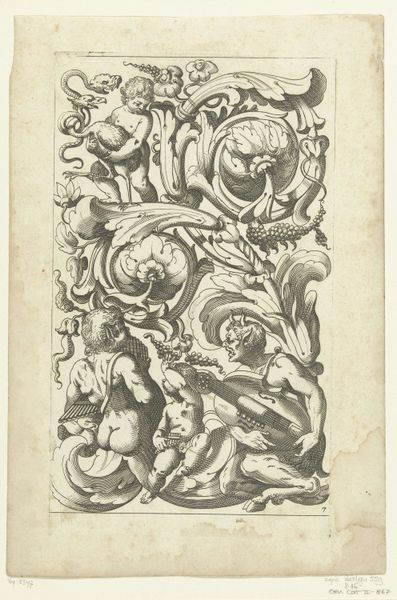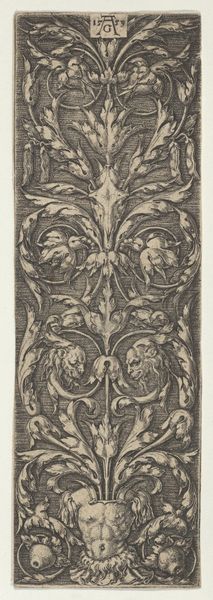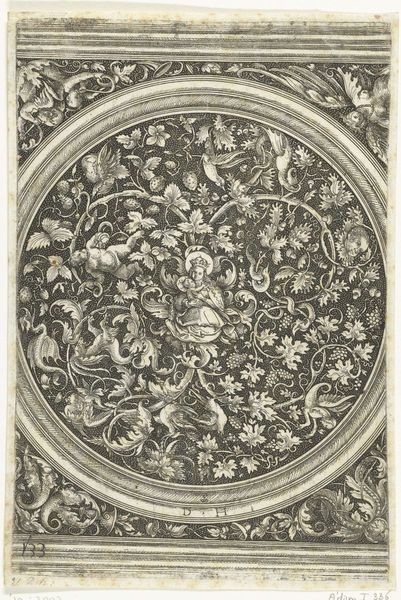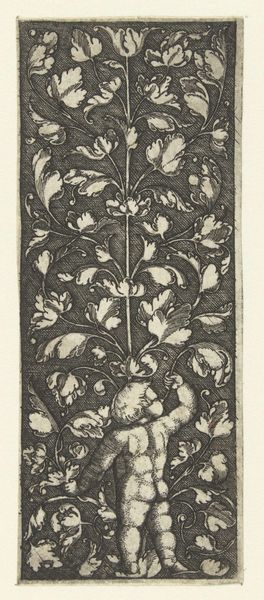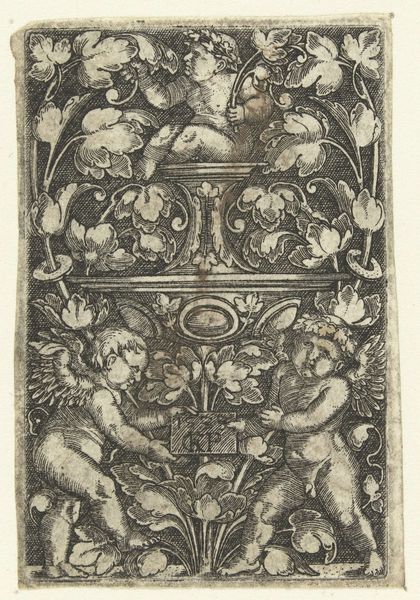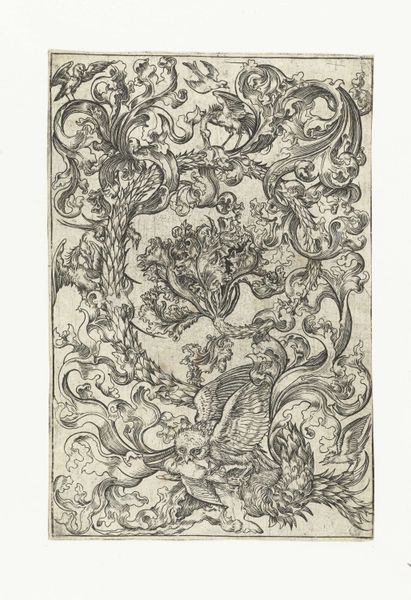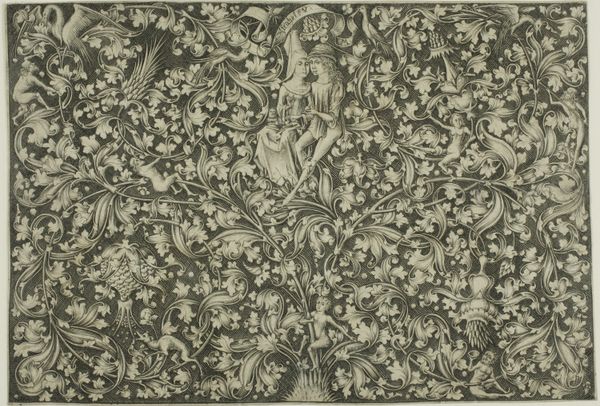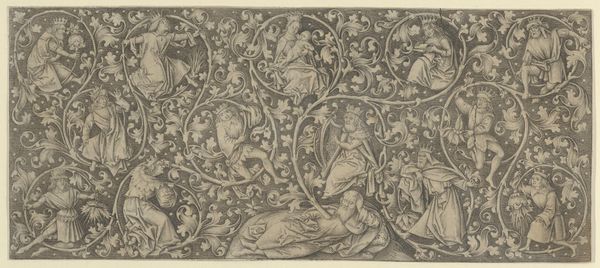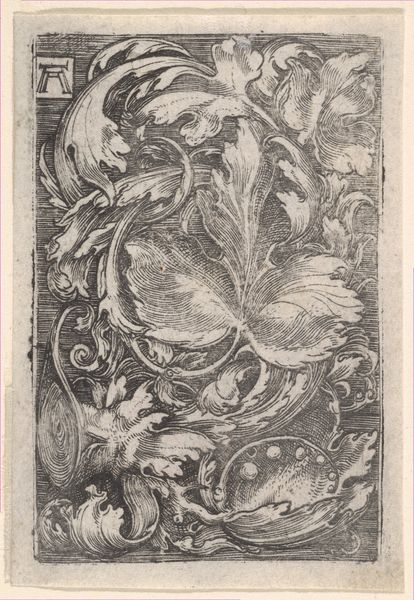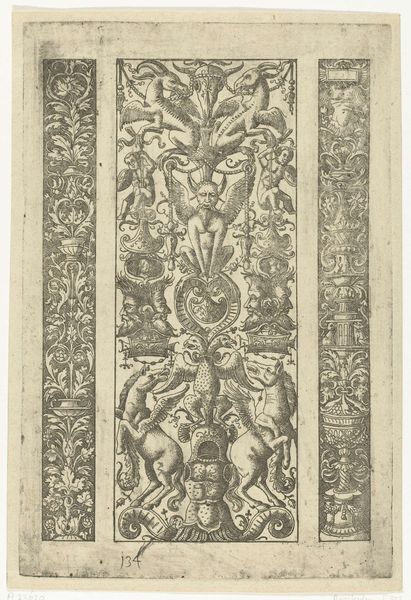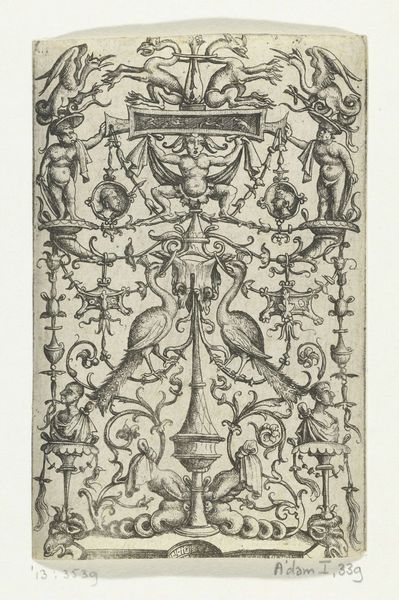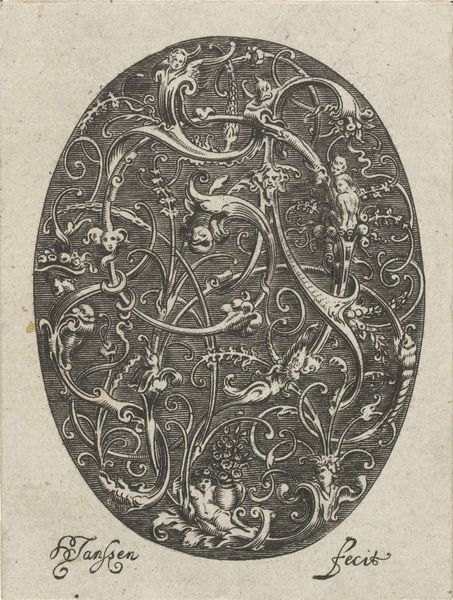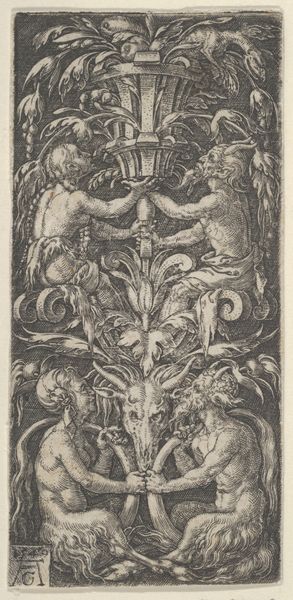
ornament, print, engraving
#
ornament
# print
#
figuration
#
11_renaissance
#
line
#
italian-renaissance
#
engraving
Dimensions: height 128 mm, width 105 mm
Copyright: Rijks Museum: Open Domain
Curator: Look closely at this intricate engraving titled "Ornament met putti," created sometime between 1470 and 1550, during the Italian Renaissance. It's by an anonymous artist. Editor: My first thought is "riot." A cherubic riot. Look at those little troublemakers! It feels like a botanical garden has been thoroughly invaded by cherubs. Curator: Yes, “riot” is a perfect way to describe it. Putti, as they’re called, were frequently used in Renaissance art to symbolize divine love and innocence, connecting with classical concepts of playful, mischievous spirits, too. What do you see of that here? Editor: Well, "divine love" isn't quite the phrase that comes to mind. It’s more like… divine mayhem? One's practically head-butting a leaf! The symbolism almost feels secondary to the sheer exuberance. This feels like the prelude to some very naughty happenings. Curator: That’s a great observation! The artist’s choice of engraving allows for an amazing density of detail. The intertwining foliage—so typical of Renaissance ornament—creates a powerful contrast against the fleshy putti. The cultural memory is overflowing! Editor: Absolutely. It's this intense, busy, slightly overwhelming quality that makes it so engaging. Each cherub is rendered so individually. Look, one is attempting flight, another one looks frankly a little cross-eyed… there's something endearingly unidealized about their humanity. It gives them an unexpected psychological weight! Curator: The interplay of innocence and perhaps not innocence. Also the fact the original use for these things was for surface decoration. So imagine your beautiful Cassone with these exact cherubs frolicking across it! How does it influence your personal sense of culture to see them today, removed from the original purpose? Editor: Stripped from context, they seem even more alive with unchanneled energy. The question of their purpose… do they have one removed from ornament? I see this as a question of where joy comes from. A question this work keeps whispering every time I see it! Curator: Beautifully put! An intriguing demonstration of how cultural memory shapes even the most apparently innocent of images. Editor: A final riotous thought, indeed! It does spark the timeless delight when something explodes the constraints placed on it.
Comments
No comments
Be the first to comment and join the conversation on the ultimate creative platform.
